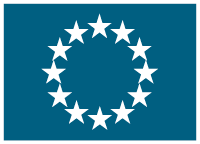Reproductive isolation and competitive ability between native and non-native ranges of invasive weeds
(ReproWeed)
Start date: Sep 1, 2012,
End date: Aug 31, 2016
PROJECT
FINISHED
Over the last three centuries many species have been dispersed beyond their natural geographic limits by humans, but to our knowledge no reproductive isolation has been demonstrated for such neo-allopatric species. Centaurea solstitialis and C. sulphurea have overlapping distributions in their native and non-native ranges. Our preliminary results show that seed production of Californian inflorescences of both species, treated with pollen from Spanish populations of the same species, was 52% and 44% lower, respectively, than inflorescences pollinated with Californian pollen, suggesting that rapid reproductive isolation may have occurred between native and non-native ranges. Reproductive isolation between Californian and Spanish populations of C. solstitialis was 68% of the reproductive isolation for interspecific hybridization among these three species. Considering the large numbers of neo-allopatric species our results are unlikely to be unique. We already have seeds from Turkey and Georgia, the geographical speciation origin of the species; Spain, the last native range before the colonization of the Americas; Chile, the first American country to be colonized; and California, where the species present the most agressive invasive behavior and higher densities. With these seeds, we plan to obtain an F1 free of maternal effects and to cross-pollinate them to detect levels of reproductive isolation either pre-existing or newly developed in the non-native ranges. We will study the type of incompatibility by means of the study of pollen growth. We also plan to conduct reciprocal transplant experiments in Spain and California to study plant behavior in natural conditions (biomass, pollinator attraction, flower and seed production, herbivory) and to calculate phenotypic plasticity indexes for plants from both regions on both regions. Finally we will study the genetic structure of the populations to try to correlate it with the detected reproductive barriers.
Get Access to the 1st Network for European Cooperation
Log In
or
Create an account
to see this content
Coordinator
UNIVERSIDADE DE COIMBRA
€ 100 000,00- Sergio Vicente
- PACO DAS ESCOLAS 3001 451 COIMBRA (Portugal)
Details
- 100% € 100 000,00
-
 FP7-PEOPLE
FP7-PEOPLE
- Project on CORDIS Platform